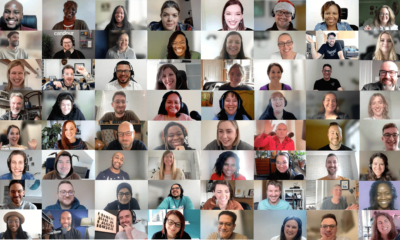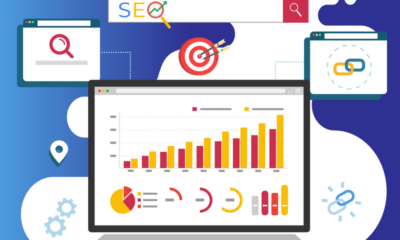MARKETING
How to Run an Effective Vetting Process for Candidates in 2022

Imagine you’re a hiring manager and put up an ad for a role. After a lengthy process, you hire someone you think is a great fit.
Except, reality sets in a few weeks later when you realize they were a bad hire and you have the start all over again. A robust vetting process would help you avoid this costly mistake.
However, it’s not enough to come up with a process, you have to make sure it’s inclusive, fair, and efficient. Let’s show you how.
What is a vetting process?
Companies use a vetting process to evaluate a candidate’s background and qualifications, and eliminate unqualified candidates from the pool of applicants. It can include conducting background checks, phone screens, and technical assessments.
Hiring the wrong employee can cost companies hundreds of thousands of dollars. Back in 2016, The U.S. Department of Labor estimated this cost was close to 30% of the former employee’s first-year earnings.
Today, that figure could be even higher.
Undoubtedly, recruiting and hiring candidates is an expensive and time-consuming process. This is on top of figuring out which candidates are most qualified to succeed at your company for the long haul.
A vetting process should include a few critical elements. Let’s cover how to run an effective vetting process that’s efficient and free of bias as possible.
How long does the vetting process take?
The vetting process can take anywhere from a few days to a few weeks depending on what your process looks like, the seniority level for the role, and the industry.
For instance, a role at the Federal Bureau of Investigation likely has a much longer vetting process than one at a SaaS company. The FBI likely conducts in-depth background checks beyond a candidate’s criminal background whereas a SaaS company may focus the bulk of its vetting process on technical proficiency.
Over time, your company will start compiling data on how long the process takes based on the factors mentioned above and build its strategy based on that.
How to Run a Candidate Vetting Process
- Write an accurate job description.
- Leverage software to review candidates’ application materials.
- Use video interviews prior to phone calls.
- Evaluate candidates’ qualifications using additional assessment tools.
- Trust the process.
1. Write an accurate job description.
Your vetting process will be easier start-to-finish if you take the time to write an accurate and compelling job description.
I spoke to Claire McCarthy, team lead in sales recruiting, who told me the job description can help both you and the candidate ensure a mutually beneficial fit from the start.
“We have pretty comprehensive job descriptions and we want candidates to take the time to read them and ensure the role is a good match for their background and skillset, as well as their long-term goals,” she said.
McCarthy adds that it’s valuable to focus on attributes when creating your job description.
“For instance, for a sales role, we might list ‘customer-first mentality’ as a requirement,” she said.
In addition, craft your description to attract a wide pool of diverse applicants, since diverse teams perform better, and come up with more innovative ideas.
This is important because a Hewlett Packard internal report found that women historically won’t apply for a job unless they meet all the qualifications, while most men will apply if they meet only 60% of them.
However, it doesn’t only affect candidates from a gender perspective. Racism, ableism, and ageism can also impact the hiring process – and it all starts with your job description.
To do so, you can rely on tools like Textio, which help you identify and remove implicit and explicit biased language from your job description.
The goal is to use inclusive language that welcomes and attracts a diverse range of talent.
Take a look at the marketing job descriptions you should recruit and hire to have an all-star team.
2. Leverage software to review candidates’ application materials.
A vetting process should allow you to filter out candidates who don’t have the skills necessary to succeed in the role. To do this, start by vetting the applicant’s resume, cover letter, and other application materials they’ve submitted for review.
Additionally, a vetting process can support your diversity and inclusion initiative by ensuring your HR team remains fair and unbiased when evaluating potential candidates.
For instance, you might implement a blind search system in which resumes are scanned by software, such as Greenhouse.
By ensuring your resumes are automatically sorted based on skill, you’re circumventing some of the unintentional biases that might lead your HR employees to make unfair judgments.
3. Use video interviews prior to phone calls.
There are certain questions you can ask to decipher whether or not a candidate has the correct skills for the role.
You don’t want your recruiters spending valuable time on phone calls when you can just as easily collect that information another way.
At HubSpot, our hiring process includes video interviews, in which candidates must answer a series of questions and submit their recorded responses. The caveat here is that they must answer each question within a minute and they won’t know what the questions are ahead of time.
“We do this for high volume roles, and use the video interview as a qualifier for whether or not the candidate moves forward with a phone interview,” said McCarthy.
Consider using video interviews to limit the amount of phone calls your HR team needs to make each day.
4. Evaluate candidates’ qualifications using additional assessment tools.
To evaluate whether your candidate will succeed in the role, consider offering initial assessments.
As a HubSpot writer, I was asked to write a blog post from scratch using one of HubSpot’s prompt topics before being invited for an interview. This makes sense – why waste your time, and your candidate’s time, if they don’t have the skills you’re looking for?
From the candidate’s perspective, it allows them to get a taste of what the role requires and show off why they’re right for it.
You might consider offering role plays for customer-facing positions, case studies for functional roles, or coding assessments for engineering positions.
5. Trust the process.
The point of having a process is to ensure consistency and promote fairness.
This means across all tools and software you utilize just as much as the steps you follow.
Ultimately, a vetting process is only effective if it’s consistent and replicable.
“A vetting process is about establishing a process at the beginning and sticking to it,” said McCarthy. “Additionally, it’s important to use a vetting process to operationalize how we review candidates and decide which ones are most qualified to move forward to next steps.”
Using these five tactics will mitigate the time and money your HR team spends on recruitment in 2022 while ensuring you hire the best applicants – a win all around.
Editor’s Note: This post was originally published in January 2019 and has been updated for comprehensiveness.
Source link




















You must be logged in to post a comment Login